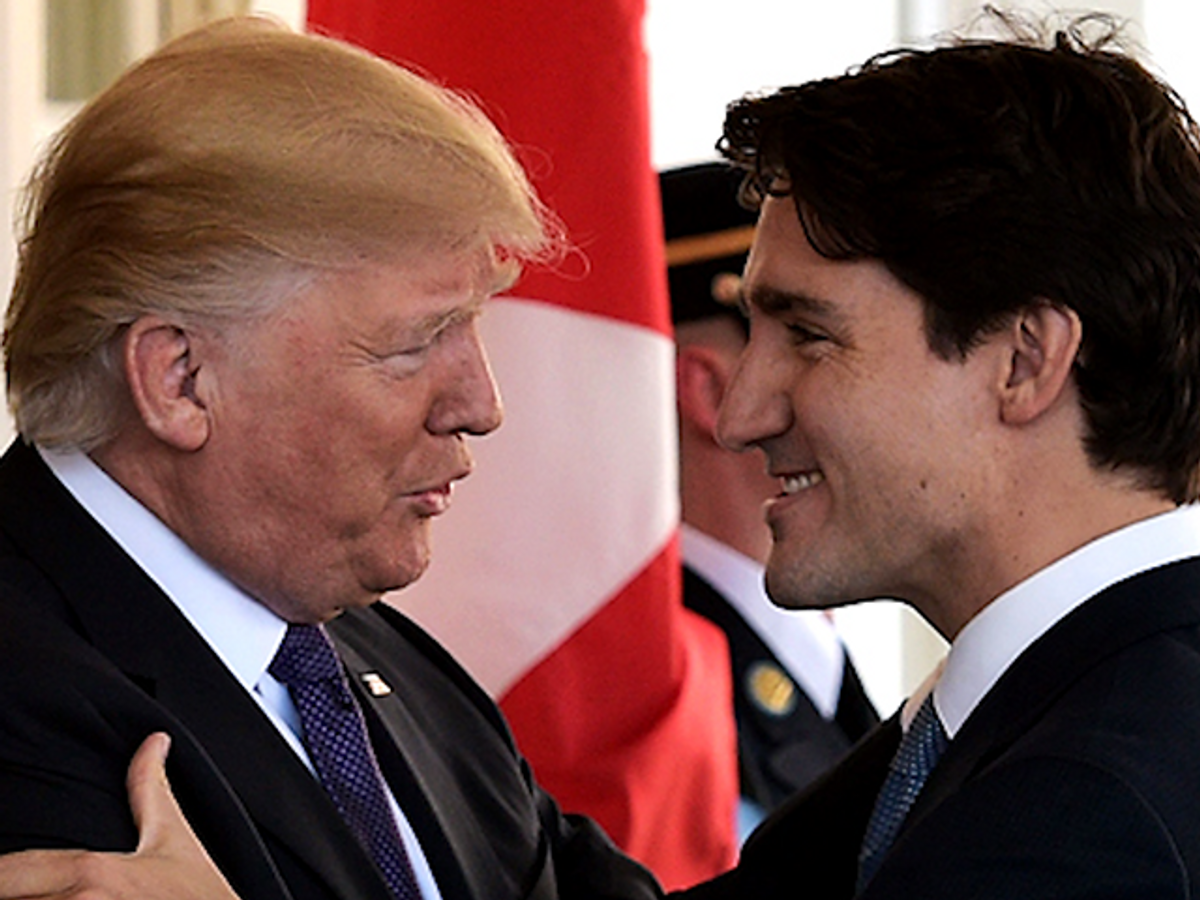According to media reports, Bill Blair, Canada’s minister of border security, is attempting to close a loophole in the Canada-U.S. Safe Third Country Agreement (STCA).
The agreement allows Canada to send asylum-seekers back to the United States without hearing their refugee claims (and allows the U.S. the same option for those going in the other direction). The loophole is that the STCA only applies to asylum-seekers who present themselves at official land ports-of-entry.
Since President Donald Trump was elected, around 40,000 asylum seekers have used this loophole by crossing into Canada from the U.S. at places other than official ports-of-entry. They are not trying to sneak into Canada undetected. Rather, they cross the border irregularly to avoid being turned away under the STCA and then approach Canadian authorities to make refugee claims.
The number of irregular border-crossers has declined recently, with fewer than 1,000 in January 2019. What’s more, while the overall number of refugee claims made in Canada has been higher than usual in the past two years, it is not far off historical norms.
Nonetheless, the additional 40,000 refugee claims have produced pressures on the refugee determination system and on provincial social programs. There has also been political pushback, with calls from the Conservative party for the government to stem the flow.
However, closing the STCA loophole is a complicated proposition.
Blair reportedly wants irregular border-crossers to be taken to official ports-of-entry and processed as if they had presented themselves there directly. In other words, the STCA would apply both at official ports-of-entry and elsewhere.
To make this work, the U.S. would need to agree, which is the first complication.
More asylum-seekers come to Canada
The purpose of the STCA from a Canadian perspective was to force the U.S. to take responsibility for asylum-seekers who travel to Canada via the United States. Canada had long wanted the STCA because the flow of asylum-seekers is asymmetrical. Far more asylum-seekers come to Canada from the U.S. than the reverse.
For the same reason, the United States has long refused to agree to the STCA. That only changed after 9-11, when Canada offered the U.S. greater border security integration in exchange for the STCA.
Canada now wants to expand the STCA, so the question is: What will Canada have to give the U.S. to get them to agree?
One might expect quite a lot, given that Trump has shown little interest in taking steps that would result in thousands of asylum-seekers who would otherwise go to Canada remaining in the U.S.
The need for a quid pro quo raises a second complication. The STCA is being challenged in Canadian courts by human rights organizations who say that the U.S. is not safe for refugees and that the STCA violates the Canadian Charter of Rights and Freedoms.
Given the anti-refugee policies of the Trump administration, there is a good chance that courts will strike down the STCA. By negotiating expansions to the STCA without waiting to see whether the regime is upheld, there is a real risk that anything Canada gives to the U.S. in exchange will be for naught.
A third complication: Even if Canada gets the U.S. to agree to expand the STCA, and even if the regime is upheld by the courts, the impact of any expansion is likely to be both counterproductive and dangerous.
A dangerous incentive
If asylum-seekers who are intercepted at irregular border crossings are returned to the U.S., this will create a strong incentive for such asylum-seekers to cross the border without being intercepted.
Currently, irregular border crossings are manageable and organized. Most occur in a single, well-monitored location in Québec. That crossing is not dangerous. Border officials and RCMP are present. Irregular border-crossers immediately enter into immigration and refugee processing, which includes health, criminality and security screening.
Other countries that have tried to stem flows of asylum-seekers by closing off safe and manageable routes have had a common experience. The flows do not stop but are instead diverted into more remote and hence more dangerous routes. Organized crime gets involved, bringing increased security risks and violence. The inevitable result is lost lives and decreased border security.
In the end, the political pressure on the government to be seen doing something on this file may outweigh these policy considerations. But politics lead to a fourth complication.
During the last federal election campaign, Justin Trudeau distinguished himself from former prime minister Stephen Harper partly through a more compassionate response to the Syrian refugee crisis and the death of Alan Kurdi — himself a tragic victim of cat-and-mouse games between smugglers and governments seeking to keep refugees at bay.
Shortly after Trump’s inauguration, Prime Minister Trudeau further sought the moral high ground when, in response to the president’s anti-refugee policies, he famously tweeted Canadians will welcome those fleeing persecution.
There is no way to close the STCA loophole without the Liberal party turning its back on those progressive values, on the eve of a federal election campaign.
In this context, attempting to expand the STCA may not only be bad policy, it may also be bad politics.
Sean Rehaag, Associate Professor, Osgoode Hall Law School, York University, Canada
This article is republished from The Conversation under a Creative Commons license.

Shares